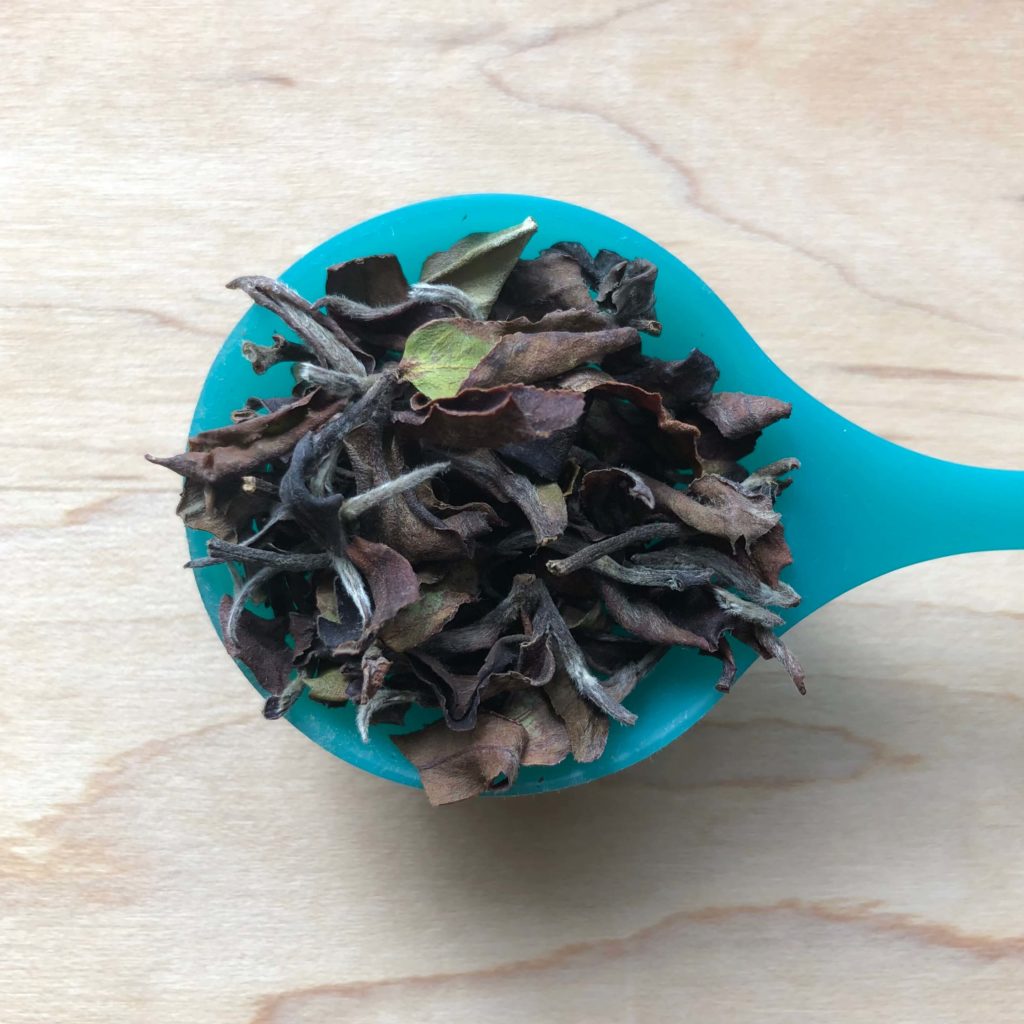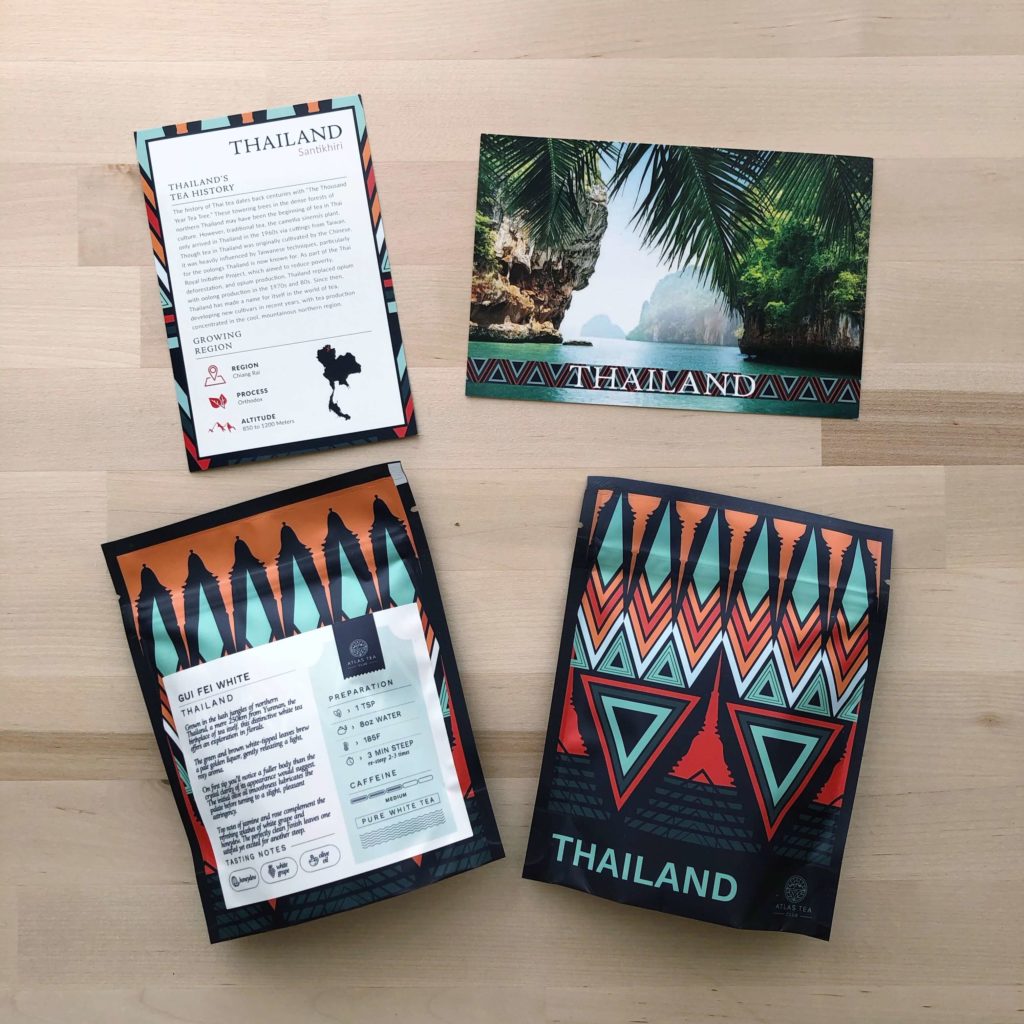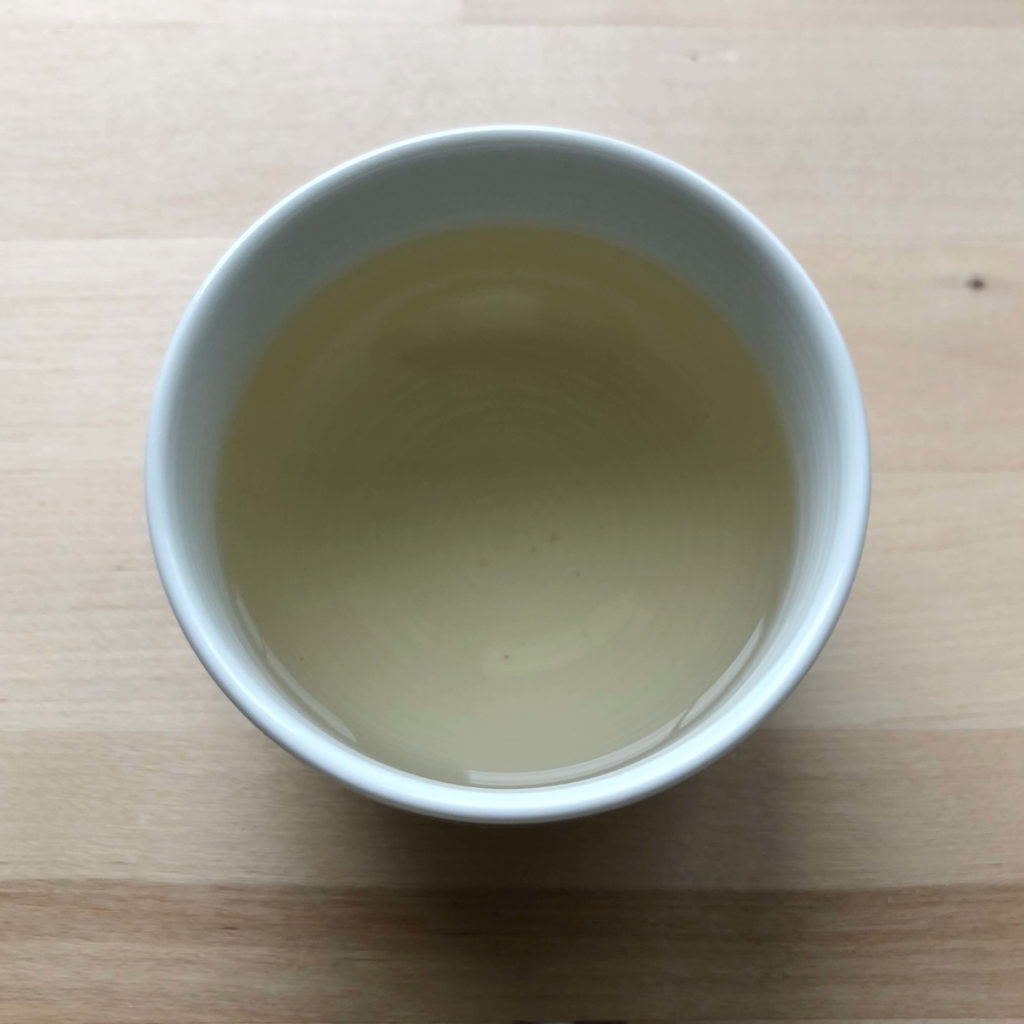
I’ve only had a few opportunities to try teas from Thailand. So, I’m using tea as a virtual plane ride to another country to learn more!
I was pretty excited when Kelly from Atlas Tea Club asked if she could send me their Thailand tea box because she recalled I was interested in the country. She sent me a white (Gui Fei White), green (Golden Lily Green), and black (Honey Scent Black) tea to taste. Since I’ve been trying a range of white tea over the last few months, so I wanted to see how this tasted compared to other countries.
A few months ago, I tasted an Atlas Tea Club box from India. Like the last box, this package came with a standard postcard with a picture and general information about the country, one reusable muslin tea bag, and 10 recyclable/compostable filter bags. This box also arrived with a new additional index card with information about Thailand’s tea history. I thought this index card was a lovely addition as it tied back into the focus of the company which is catering “single-origin teas from around the world.”

Based on the index card, tea was originally introduced to Thailand through cuttings from Taiwan in the 1960s and tea was heavily influenced by Taiwanese techniques. Tea production in Thailand is concentrated in the mountainous northern region of the country. The Gui Fei White tea was grown in such an area, Chiang Rai, which is 250 km from Yunnan, China, and has an altitude of 850 to 1200 metres.
Now, with some information about the tea and Thailand, let’s get to tasting!
Description: “On first sip you’ll notice a fuller body than the crystal clarity of its appearance would suggest. The initial love oil smoothness lubricates the palate before turning to a slight pleasant astringency.”
Instructions: 1 tsp | 8oz |185°F | 3 min steep, re-steep 2-3 times.
Review: The dry leaves were made of small brown leaves and buds with an intermixing smell of wood, floral, and grapes. Since the leaves were so light, the first time I tried brewing this tea, it didn’t infuse correctly as the tea leaves floating on top of the water. Even so, the under brewed liquor gave me a hint of ice wine without the alcohol and was clean and crisp. So, it was already a promising start.
Therefore for future tasting sessions, I added a heaping teaspoon and poured the water on top of the leaves so they would sink and infuse.

Infusion 1 (3 minutes): The liquor had a pale tan yellow ice wine colour with a classic white tea smell of hay with a lingering of grapes. It had a nice delicate grape taste with dryness at the back of the throat and reminded me of a sweet ice wine without alcohol.
Infusion 2 (4 minutes): The liquor brewed much darker brown and tasted more woody and mineral with more astringency at the back of the throat.
Infusion 3 (5 minutes): The tan yellow infusion was fairly faint in taste and smell.

The wet leaves were a chocolate brown colour and smelled like ice wine and sweet grapes.
When it comes to the subscription box, I still wish there was more information about the specific producers of the tea. While it is nice to know more about Thailand and that tea was grown in the Chiang Rai region, it would have been interesting to know more about the farm/farmers, and what is interesting or unique about the producer themselves or processing techniques.
As for the white tea, I enjoyed the grape and iced wine profile of the white tea, but I did find it a bit more delicate side. That is on par with the other Atlas Tea Club teas I have tried in the past. I personally liked the first and second infusions the best, in that order. By the third infusion, the leaves were quite spent. Overall, this would be a nice tea for someone who is looking for a more sweet and delicate white tea or wants to try something from Thailand (3.5/5 rating).
- Type: White tea
- Origin: Thailand, Chiang Rai
- Caffeine: Medium caffeine
- Ingredients: White tea
- Company: Atlas Tea Club
The question of the post: Have you tried teas from Thailand?
